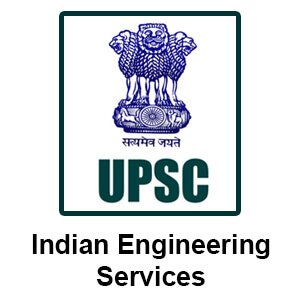
Engineering Services Examination 2020 - IES Syllabus for ETE
Indian Engineering Services (IES), also known as Engineering Services Examination (ESE), is conducted annually by the Union Public Service Commission (UPSC). The exam comprises of a written examination and interview. The recruitment is done to the services under different categories - Civil Engineering, Mechanical Engineering, Electrical Engineering, and Electronics and Telecommunication Engineering. Candidates are required to apply for different posts as per their qualification. The article here is covering the IES Syllabus for ETE. Interested candidates must check the syllabus carefully and prepare for the exam accordingly.
IES Syllabus for ETE
Candidates are required to appear for their subject related paper in both Preliminary and Main phase of the examination. The syllabi for both the phases is common. Here is the syllabus for both Paper-I and Paper-II.
PAPER-I
Basic Electronics Engineering:
Basics of semiconductors, Diode/Transistor basics and characteristics, Diodes for different uses, Transistor amplifiers of different types, Junction & Field Effect Transistors (BJTs, JFETs, MOSFETs), oscillators and other circuits, Bipolar, MOS and CMOS ICs, Basics of Integrated Circuits (ICs), Basics of linear ICs, operational amplifiers and their applications‐ linear/non‐linear; Optical sources/detectors, Basics of Optoelectronics and its applications.
Basic Electrical Engineering:
DC circuits ohm’s & Kirchoff’s laws, circuit theorems, mesh and nodal analysis, Electromagnetism, Faraday’s & Lenz’s laws, induced EMF and its uses, Single‐phase AC circuits, Transformers, efficiency, Electrical power sources‐ basics: hydroelectric, thermal, nuclear, wind, solar; Basics‐DC machines, induction machines, and synchronous machines, Basics of batteries and their uses.
Materials Science:
Electrical Engineering materials; Crystal structure & defects; composites, processing and uses; Ceramic materials‐structures, Insulating laminates for electronics, structures, properties and uses; Nano materials‐basics, preparation, purification, sintering, nanoparticles and uses; Magnetic materials, basics, classification, ferrites, Ferro/para‐magnetic materials and components; Nano‐optical/magnetic/electronic materials and uses; Superconductivity uses.
Electronic Measurements and Instrumentation:
Principles of measurement, accuracy, precision and standards; Static/dynamic characteristics of measurement systems, errors, statistical analysis and curve fitting; Analog and Digital systems for measurement, measuring instruments for different applications; Measurement systems for non‐electrical quantities; Basics of telemetry; Different types of transducers and displays; Data acquisition system basics.
Network Theory:
Network graphs & matrices; Wye‐Delta transformation; Linear constant coefficient differential equations‐ time-domain analysis of RLC circuits; 2‐port network parameters‐driving point & transfer functions; Solution of network equations using Laplace transforms‐ frequency domain analysis of RLC circuits; State equations for networks; Steady state sinusoidal analysis.
Analog and Digital Circuits:
Small signal equivalent circuits of diodes, BJTS and FETs; Diode circuits for different uses; Biasing & stability of BJT & JFET amplifier circuits; Feedback& uses; Analysis/design of amplifier‐ single/multi‐stage; Active filters, timers, multipliers, waveshaping, A/D‐D/A converters; Boolean Algebra& uses; Combinatorial/sequential circuits; Logic gates, Digital IC families, Basics of multiplexers, counters/registers/ memories /microprocessors, design& applications.
PAPER-II
Analog and Digital Communication Systems:
Random signals, noise, probability theory, information theory; Analog versus digital communication & applications: Systems‐ AM, FM, transmitters/receivers, theory/practice/ standards, SNR comparison; Digital communication basics: Sampling, quantizing, coding, PCM, DPCM, multiplexing‐audio/video; Digital modulation: ASK, FSK, PSK; Multiple access: TDMA, FDMA, CDMA; Optical communication: fibre optics, theory, practice/standards.
Control Systems:
Classification of signals and systems; Application of signal and system theory; System realization; Signal flow graphs, Routh?Hurwitz criteria, root loci, Nyquist/Bode plots; Transforms & their applications; Feedback systems?open &close loop types, stability analysis, steady-state, transient and frequency response analysis; Design of control systems, compensators, elements of lead/lag compensation, PID and industrial controllers.
Computer Organization and Architecture:
Basic architecture, CPU, I/O organisation, memory organisation, peripheral devices, trends; Hardware /software issues; Data representation& Programming; Operating systems?basics, processes, characteristics, applications; Memory management, virtual memory, file systems, protection & security; Databases, different types, characteristics and design; Transactions and concurrency control; Elements of programming languages, typical examples.
Electro Magnetics:
Elements of vector calculus, Maxwell’s equations?basic concepts; Gauss’, Stokes’ theorems; Wave propagation through different media; Transmission Lines?different types, basics, Smith’s chart, impedance matching/transformation, S? parameters, pulse excitation, uses; Waveguides?basics, rectangular types, modes, cut?off frequency, dispersion, dielectric types; Antennas?radiation pattern, monopoles/dipoles, gain, arrays?active/passive, theory, use.
Advanced Electronics Topics:
VLSI technology: Processing, lithography, interconnects, packaging, testing; VLSI design: Principles, MUX/ROM/PLA?based design, Moore & Mealy circuit design; Pipeline concepts & functions; Design for testability, examples; DSP: Discrete-time signals/systems, uses; Digital filters: FIR/IIR types, design, speech/audio/radar signal processing uses; Microprocessors & microcontrollers, basics, interrupts, DMA, instruction sets, interfacing; Controllers & uses; Embedded systems.
Advanced Communication Topics:
Communication networks: Principles /practices /technologies /uses /OSI model/security; Basic packet multiplexed streams/scheduling; Cellular networks, types, analysis, protocols (TCP/TCPIP); Microwave & satellite communication: Terrestrial/space type LOS systems, block schematics link calculations, system design; Communication satellites, orbits, characteristics, systems, uses; Fibre?optic communication systems, block schematics, link calculations, system design.
Prepare a proper time-table to study for both the papers. IES is one of the toughest exams in the country and candidates must start the preparation as early as possible. Make short notes and solve the previous years’ question papers.

0 Comments